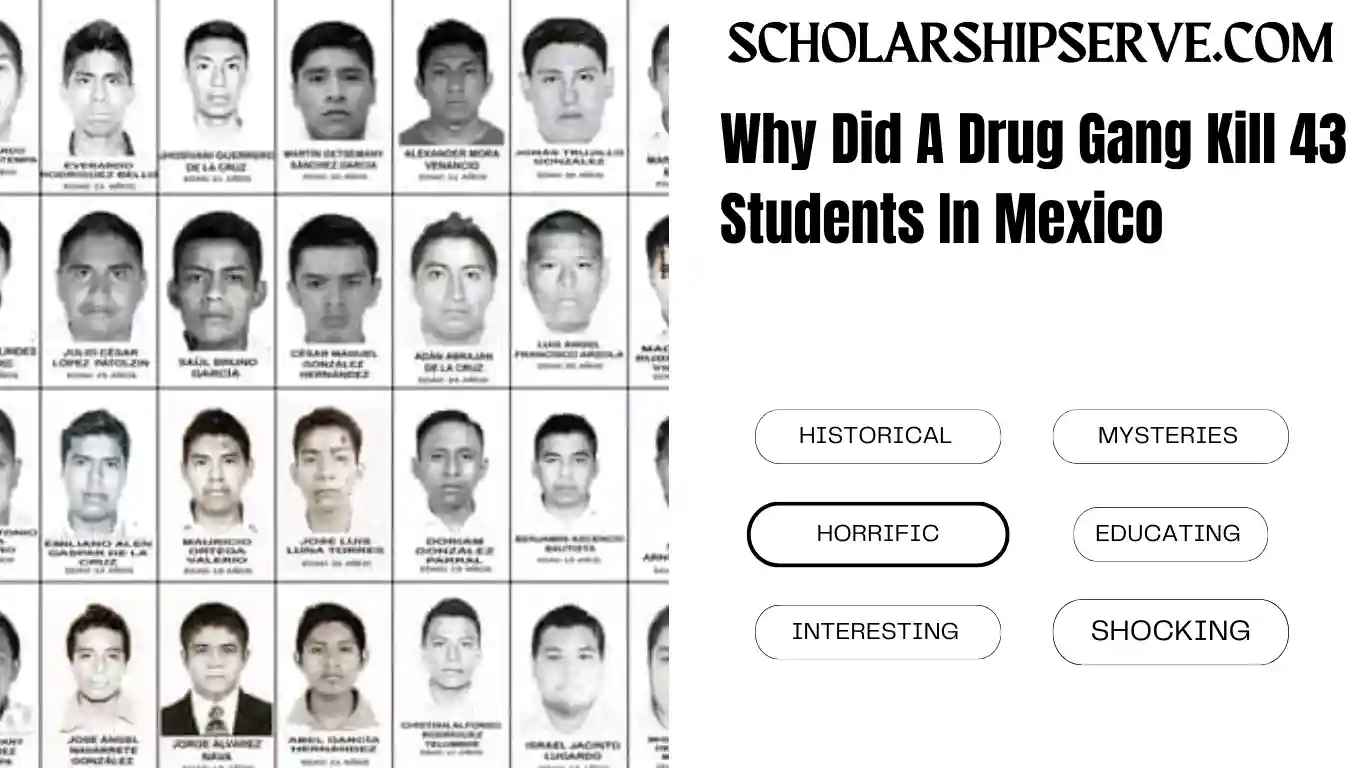Why Did A Drug Gang Kill 43 Students In Mexico.
On a fateful day in September 2014, 43 young individuals studying at the Ayotzinapa Rural Teachers’ College embarked on a journey to voice their concerns in Mexico City. Little did they know that their path would cross with a sinister web of crime and corruption in Iguala, Guerrero, Mexico. Instead of reaching their destination, these students were snatched away by the very authorities entrusted with their safety, subsequently delivered into the hands of a notorious drug syndicate. Tragically, only six of these students have been found, leaving the whereabouts of the remaining 37 shrouded in uncertainty.
- Watch Phoebe Viral Video Leaked On Twitter
- Watch How Body Of FGCU Student Missing Was Found In Campus Lake
- FACT CHECK: Why 21 Indian Students Deported From US In A Single Day
Know Why Gang Kill 43 Students In Mexico
In the course of the investigation, a trail of text messages has emerged, shedding light on the dark events that unfolded that night. These messages hint at the involvement of the Guerreros Unidos drug cartel, who initially planned to abduct the students for ransom. However, a terrible mistake occurred, leading to the students being wrongly identified as rival gang members and subsequently murdered.
What’s even more chilling is the implication that elements within the police force played a role in the kidnapping and subsequent demise of the students, seemingly exchanging them for financial gain.
The plight of the 43 missing students has ignited fury not just within Mexico but resonates globally. Accusations have been leveled against the Mexican government, alleging a cover-up in an attempt to shield the truth. Yet, the government vehemently denies any involvement in the students’ disappearance.
While the investigation continues, one grim fact remains undeniable: these students fell victim to a horrifying crime. The text messages offer critical puzzle pieces in understanding the sequence of events, but they don’t unlock all the answers. The families of the missing students yearn for the truth regarding the fate of their loved ones.
Beyond the text messages, investigators have also gathered a mosaic of evidence linking the Guerreros Unidos cartel to the students’ vanishing act. This evidence encompasses eyewitness accounts, physical proof, and intercepted communications.
However, justice has moved at a sluggish pace. Accusations loom that the Mexican government’s reluctance to apprehend those responsible is tantamount to protecting the drug cartels.
The case of the 43 absent students stands as a stark reminder of the pervasive violence and unchecked power that persist in Mexico. It underscores the imperative of pursuing justice for the victims of crime, their story serving as a beacon for those who dare to challenge impunity.
